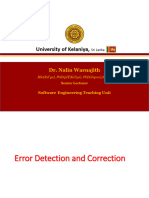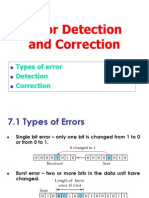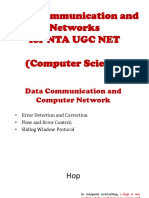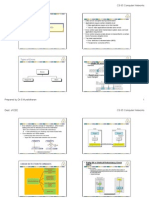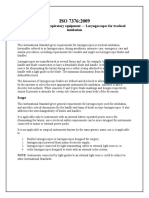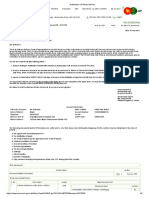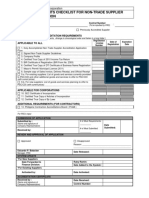CS254 Network Technologies
Lecture 2: Network Models & Error Detection
and Correction
Dr Nikos Antonopoulos
Department of Computing
University of Surrey
Autumn 2006
2.1 Layered Tasks
Sender, Receiver, and Carrier
H ierarch y
Services
1
� Figure 2.1 Sending a letter
2.2 Internet Model
P eer- t o - P eer P ro ces s es
F u nct io ns o f L ay ers
Su m m ary o f L ay ers
2
�Figure 2.2 Internet layers
Figure 2.3 Peer-to-peer processes
3
�Figure 2.4 An exchange using the Internet model
Figure 2.5 Physical layer
4
�Figure 2.6 Data link layer
Figure 2.7 Node-to-node delivery
5
�Figure 2.8 Example 1
Figure 2.9 Network layer
6
�Figure 2.10 Source-to-destination delivery
Figure 2.11 Example 2
7
�Figure 2.12 Transport layer
��������
���
����
Reliable process-to-process delivery of a message
8
�Figure 2.14 Example 3
Figure 2.15 Application layer
9
�Figure 2.16 Summary of duties
Figure 2.17 OSI model
10
� Position of the data-link layer
Chapter 10
Error Detection
and
Correction
11
� Note:
Data can be corrupted during
transmission. For reliable
communication, errors must be
detected and corrected.
10.1 Types of Error
Single-Bit Error
Burst Error
12
� Note:
In a single-bit error, only one bit in
the data unit has changed.
10.1 Single-bit error
13
� Note:
A burst error means that 2 or more
bits in the data unit have changed.
10.2 Burst error of length 5
14
�10.2 Detection
Redundancy
Parity Check
Cyclic Redundancy Check (CRC)
Checksum
Note:
Error detection uses the concept of
redundancy, which means adding
extra bits for detecting errors at the
destination.
15
�10.3 Redundancy
10.4 Detection methods
16
�10.5 Even-parity concept
Note:
In parity check, a parity bit is added to
every data unit so that the total
number of 1s is even
(or odd for odd-parity).
17
�Example 1
Suppose the sender wants to send the word world. In
ASCII the five characters are coded as
1110111 1101111 1110010 1101100 1100100
The following shows the actual bits sent
11101110 11011110 11100100 11011000 11001001
Example 2
Now suppose the word world in Example 1 is received by
the receiver without being corrupted in transmission.
11101110 11011110 11100100 11011000 11001001
The receiver counts the 1s in each character and comes up
with even numbers (6, 6, 4, 4, 4). The data are accepted.
18
�Example 3
Now suppose the word world in Example 1 is corrupted
during transmission.
11111110 11011110 11101100 11011000 11001001
The receiver counts the 1s in each character and comes up
with even and odd numbers (7, 6, 5, 4, 4). The receiver
knows that the data are corrupted, discards them, and asks
for retransmission.
Note:
Simple parity check can detect all
single-bit errors. It can detect burst
errors only if the total number of
errors in each data unit is odd.
19
� 10.6 Two-dimensional parity
Example 4
Suppose the following block is sent:
10101001 00111001 11011101 11100111 10101010
However, it is hit by a burst noise of length 8, and some
bits are corrupted.
10100011 10001001 11011101 11100111 10101010
When the receiver checks the parity bits, some of the bits
do not follow the even-parity rule and the whole block is
discarded.
10100011 10001001 11011101 11100111 10101010
2 0
� Note:
In two-dimensional parity check, a
block of bits is divided into rows and a
redundant row of bits is added to the
whole block.
10.7 CRC generator and checker
2 1
�10.8 Binary division in a CRC generator
10.9 Binary division in CRC checker
2 2
�10.10 A polynomial
10.11 A polynomial representing a divisor
2 3
� Table 10.1 Standard polynomials
Name Polynomial Application
CRC-8 x8 + x2 + x + 1 ATM header
CRC-10 x10 + x9 + x5 + x4 + x 2 + 1 ATM AAL
ITU-16 x16 + x12 + x5 + 1 HDLC
x32 + x26 + x23 + x22 + x16 + x12 + x11 + x10
ITU-32 LANs
+ x8 + x7 + x5 + x4 + x2 + x + 1
Example 5
It is obvious that we cannot choose x (binary 10) or x2 + x
(binary 110) as the polynomial because both are divisible
by x. However, we can choose x + 1 (binary 11) because
it is not divisible by x, but is divisible by x + 1. We can
also choose x2 + 1 (binary 101) because it is divisible by
x + 1 (binary division).
2 4
�Example 6
The CRC-12
x12 + x11 + x3 + x + 1
which has a degree of 12, will detect all burst errors
affecting an odd number of bits, will detect all burst
errors with a length less than or equal to 12, and will
detect, 99.97 percent of the time, burst errors with a
length of 12 or more.
10.12 Checksum
2 5
� 10.13 Data unit and checksum
Note:
The sender follows these steps:
•The unit is divided into k sections, each of n bits.
•All sections are added using one’s complement to get the sum.
•The sum is complemented and becomes the checksum.
•The checksum is sent with the data.
2 6
� Note:
The receiver follows these steps:
•The unit is divided into k sections, each of n bits.
•All sections are added using one’s complement to get the sum.
•The sum is complemented.
•If the result is zero, the data are accepted: otherwise, rejected.
Example 7
Suppose the following block of 16 bits is to be sent using a
checksum of 8 bits.
10101001 00111001
The numbers are added using one’s complement
10101001
00111001
------------
Sum 11100010
Checksum 00011101
The pattern sent is 10101001 00111001 00011101
2 7
�Example 8
Now suppose the receiver receives the pattern sent in Example 7
and there is no error.
10101001 00111001 00011101
When the receiver adds the three sections, it will get all 1s, which,
after complementing, is all 0s and shows that there is no error.
10101001
00111001
00011101
Sum 11111111
Complement 00000000 means that the pattern is OK.
Example 9
Now suppose there is a burst error of length 5 that affects 4 bits.
10101111 11111001 00011101
When the receiver adds the three sections, it gets
10101111
11111001
00011101
Partial Sum 1 11000101
Carry 1
Sum 11000110
Complement 00111001 the pattern is corrupted.
2 8
�10.3 Correction
Retransmission
Forward Error Correction
Burst Error Correction
Table 10.2 Data and redundancy bits
Number of Number of Total
data bits redundancy bits bits
m r m+r
1 2 3
2 3 5
3 3 6
4 3 7
5 4 9
6 4 10
7 4 11
2 9
�10.14 Positions of redundancy bits in Hamming code
10.15 Redundancy bits calculation
3 0
�10.16 Example of redundancy bit calculation
10.17 Error detection using Hamming code
3 1
�10.18 Burst error correction example
3 2







